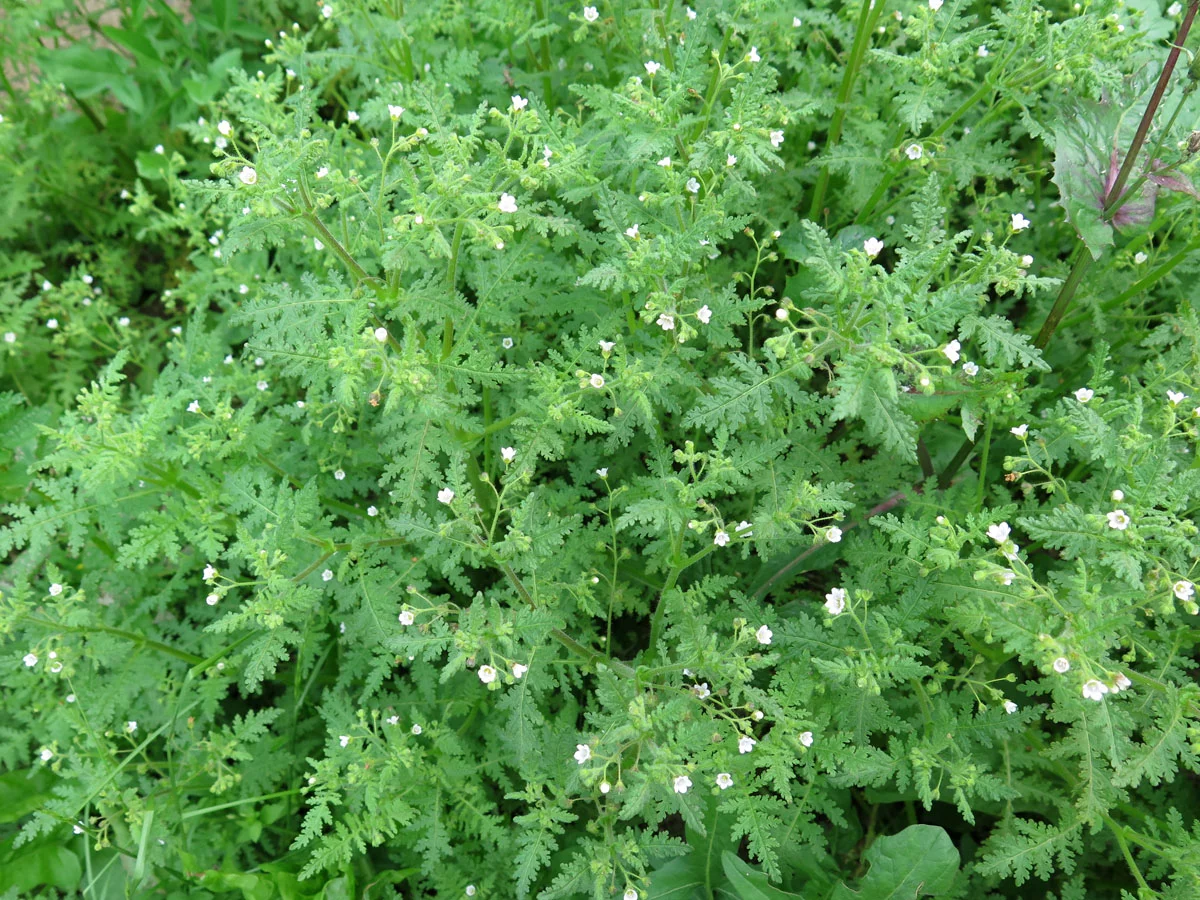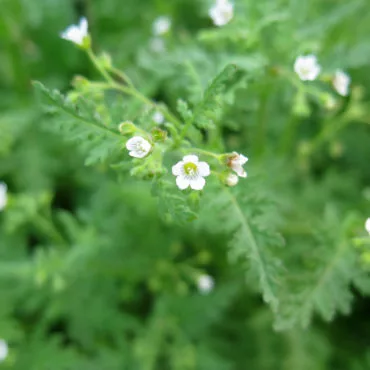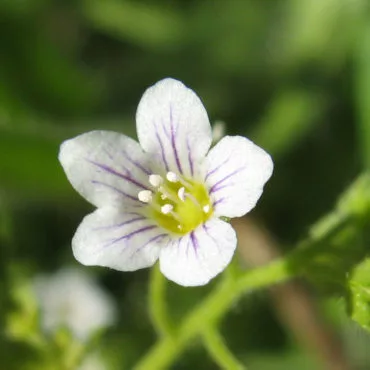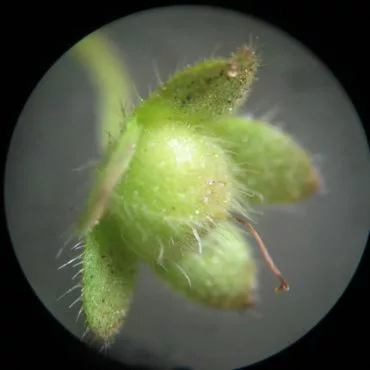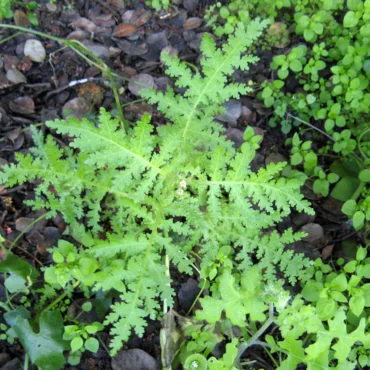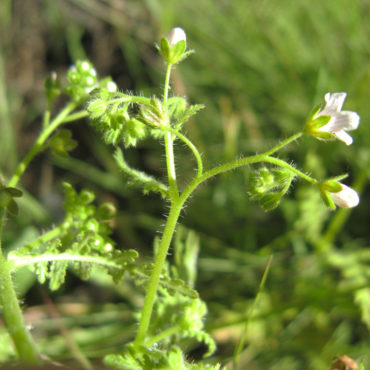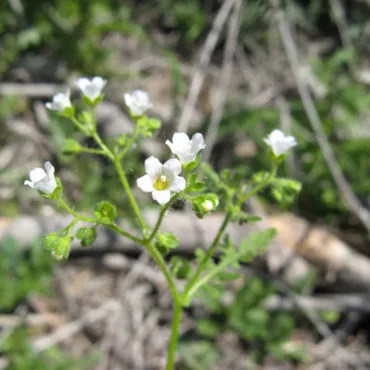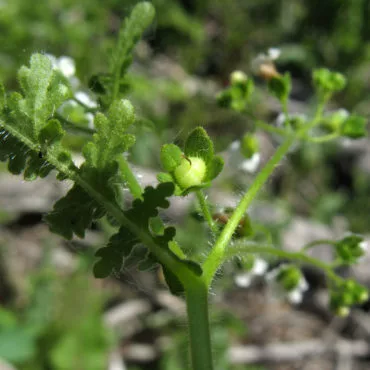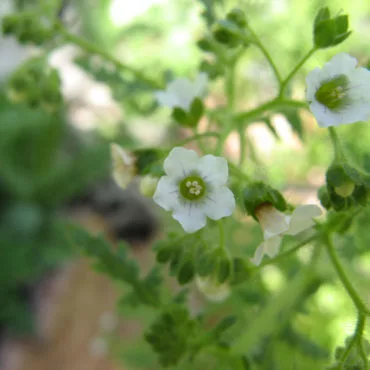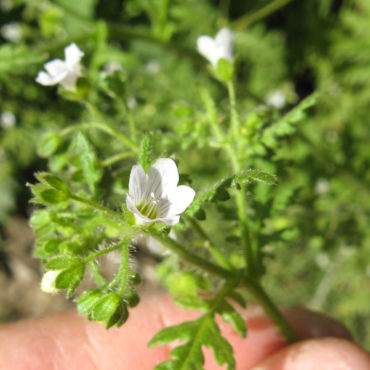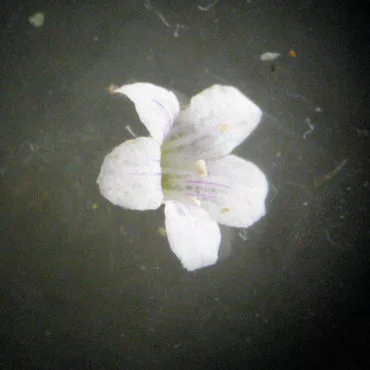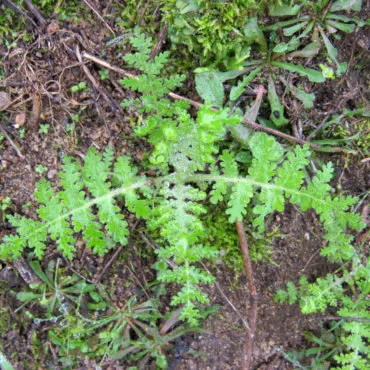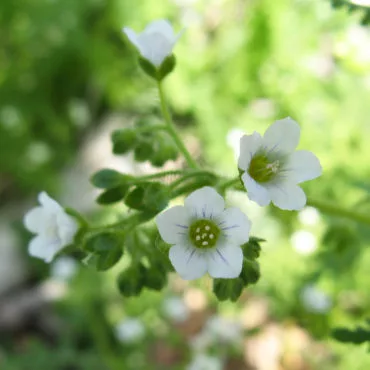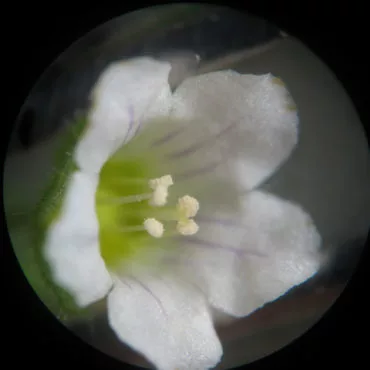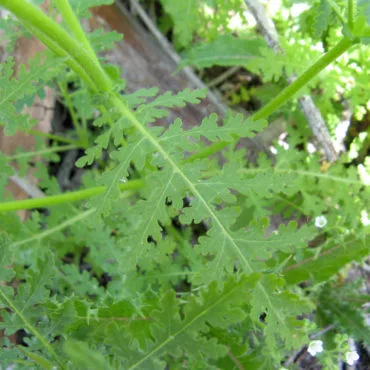Common eucrypta is a brittle-stemmed annual with a few erect or leaning stems. The plant tends to climb through or lean on woody species, using them for support. Stems may be up to three feet (1 m) in length, although the plant itself is usually lower in height. Leaves are oval or ovate, once or twice pinnately divided, the smallest divisions often lobed, giving the leaves a fern-like appearance. The lower leaves are opposite, up to 5 inches (13 cm) long; upper leaves become smaller and alternate along the stem. Their long petioles are flared at the base into wings that clasp the stem, fusing with an opposite petiole. The plant is densely hairy; many hairs are glandular giving the plant a scent, which some find pleasant59 and others do not.399
Small white flowers occur in loose, terminal or axillary clusters. Usually less than fifteen flowers are open at the same time. The flowers are bisexual and radially symmetrical, between 1/8 and 1/4 inch across (0.4-0.55 mm). The calyx and corolla are open-bell shaped, each with five rounded lobes. The white corolla often has fine red-purple lines extending into the throat. There are five stamens with white anthers that extend to the corolla top. The pollen is white. The single pistil has a one-chambered, spherical superior ovary and a single style with two short branches that extend just beyond the anthers and bear minute stigmas. The plant generally blooms between February and June.468
The fruit is a dry, rounded, hairy capsule that develops surrounded by spreading sepals and topped by a persistent style. Each fruit has a few seeds of two types: the outer seeds are larger, wrinkled and irregular in texture; inner seeds are smaller and smoother, “hidden” behind the larger ones.

